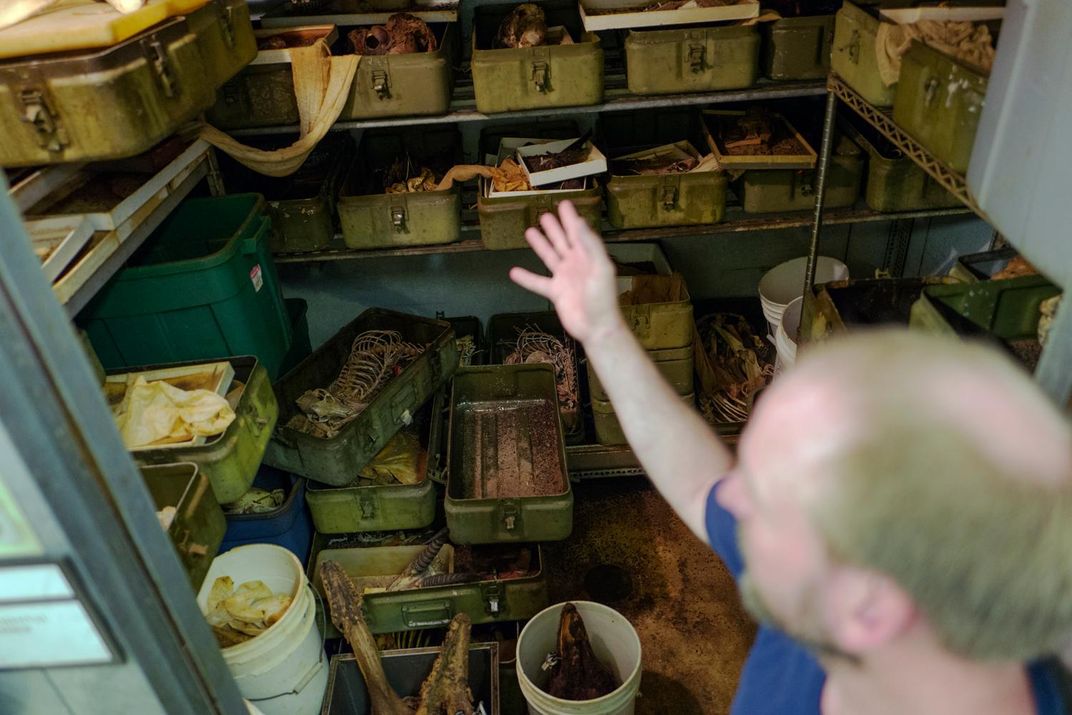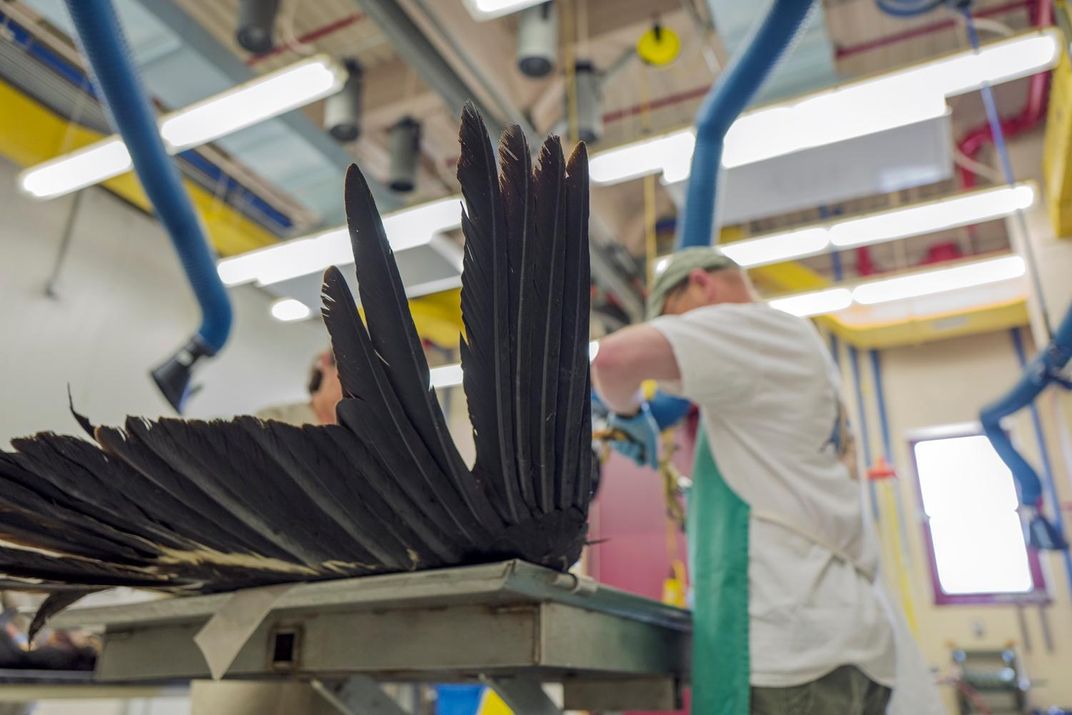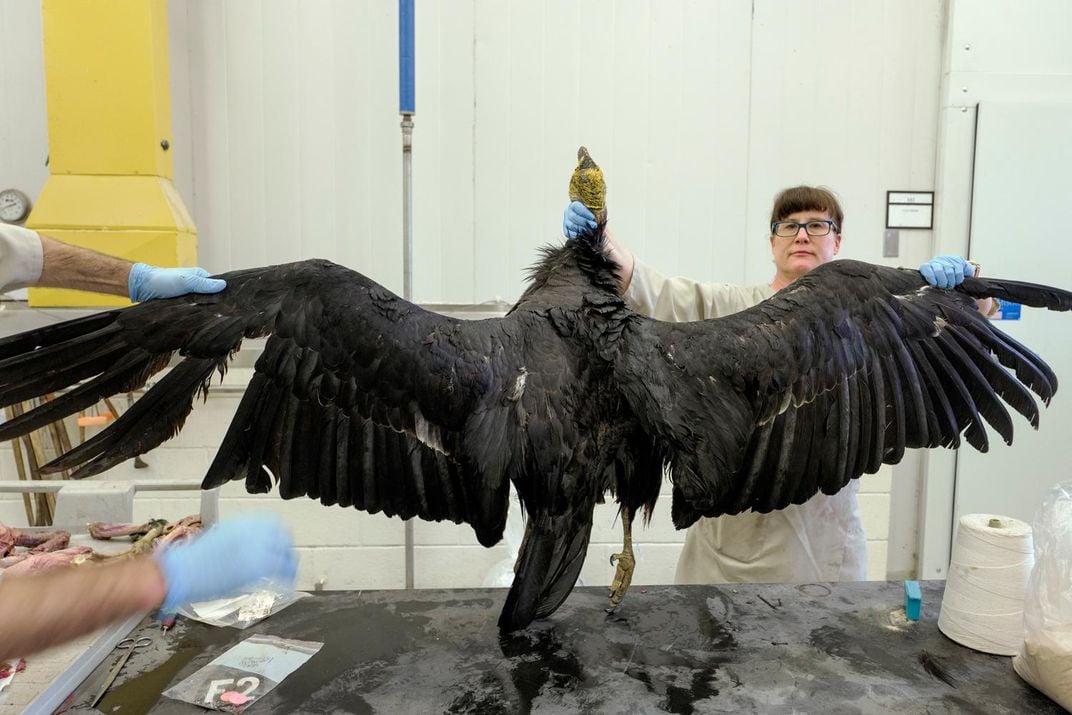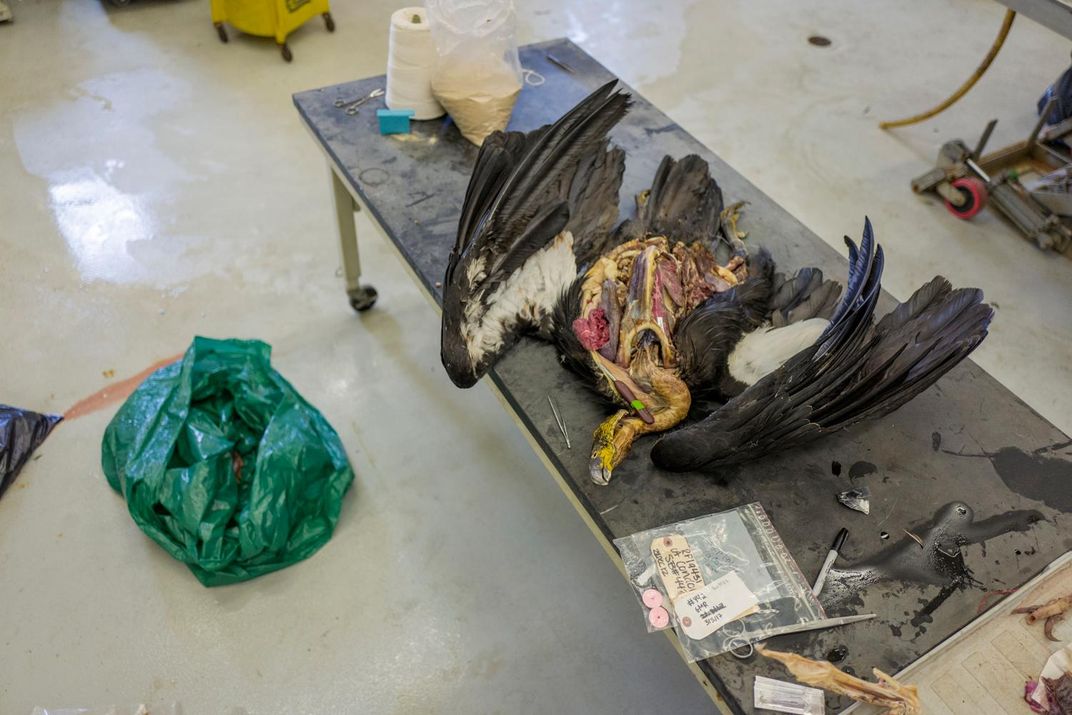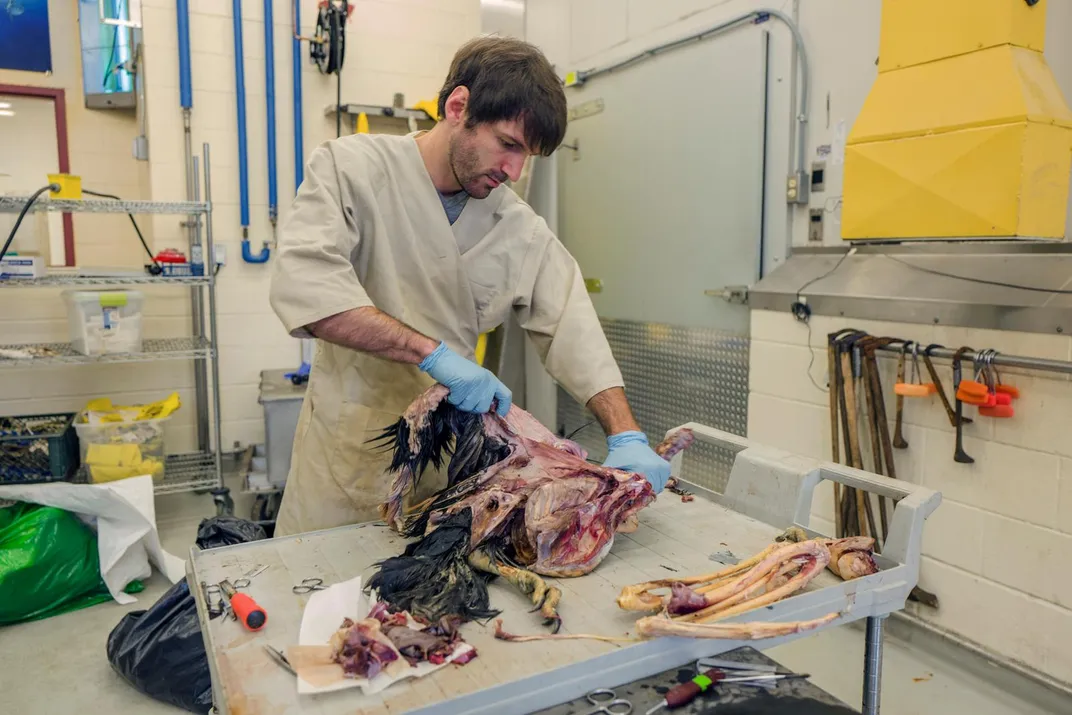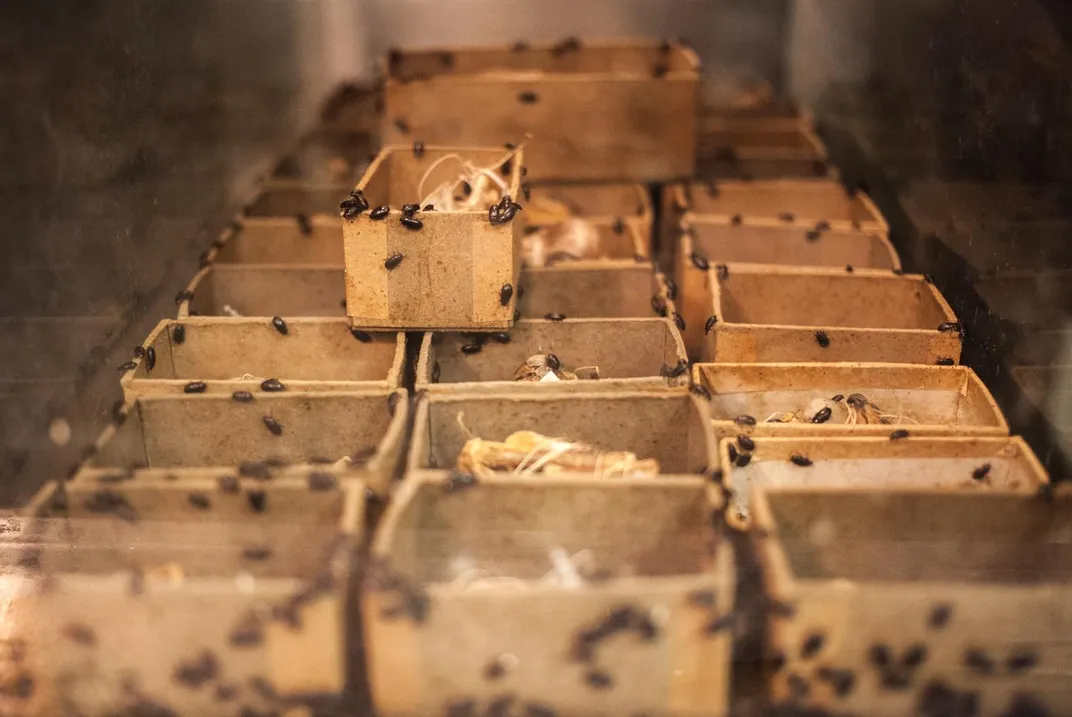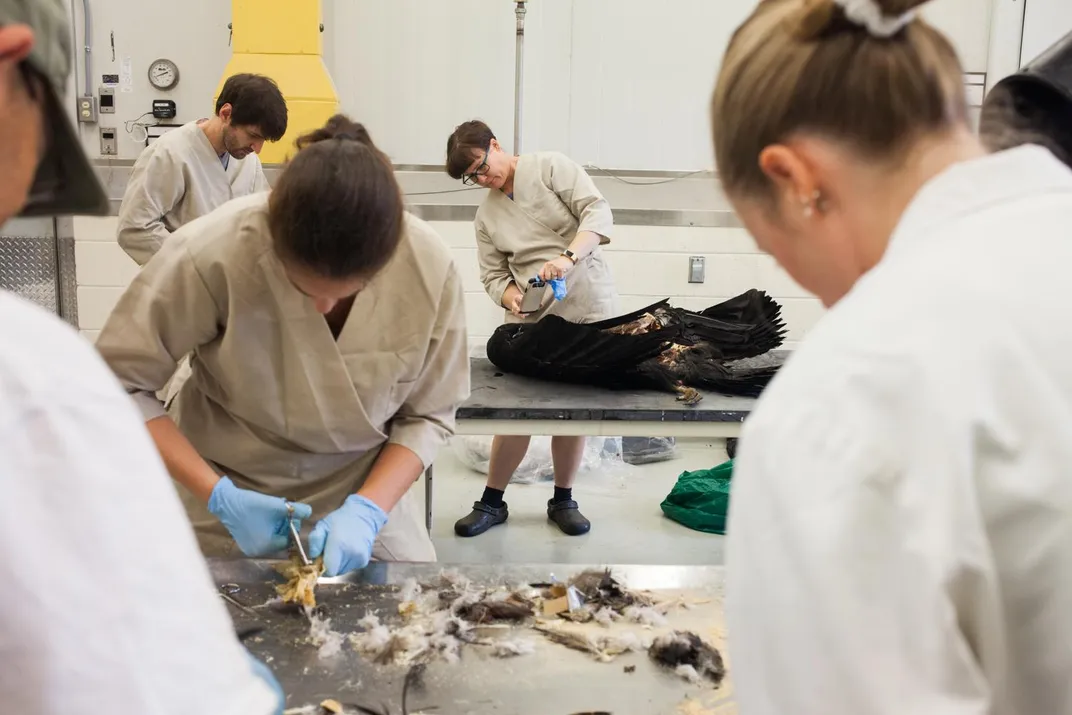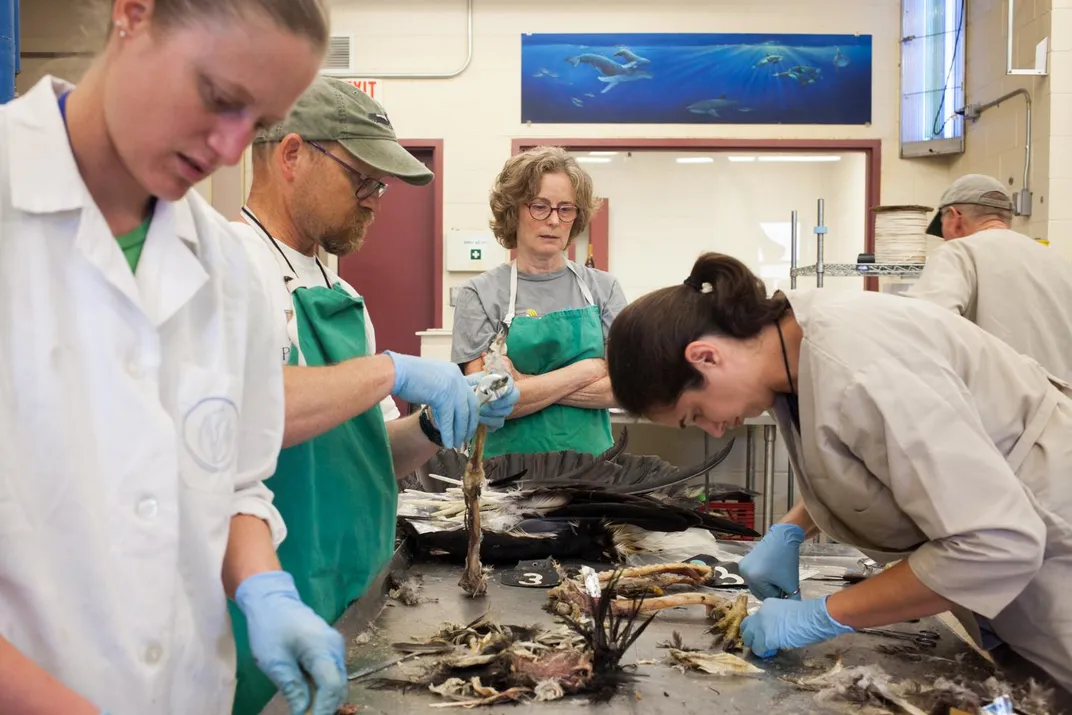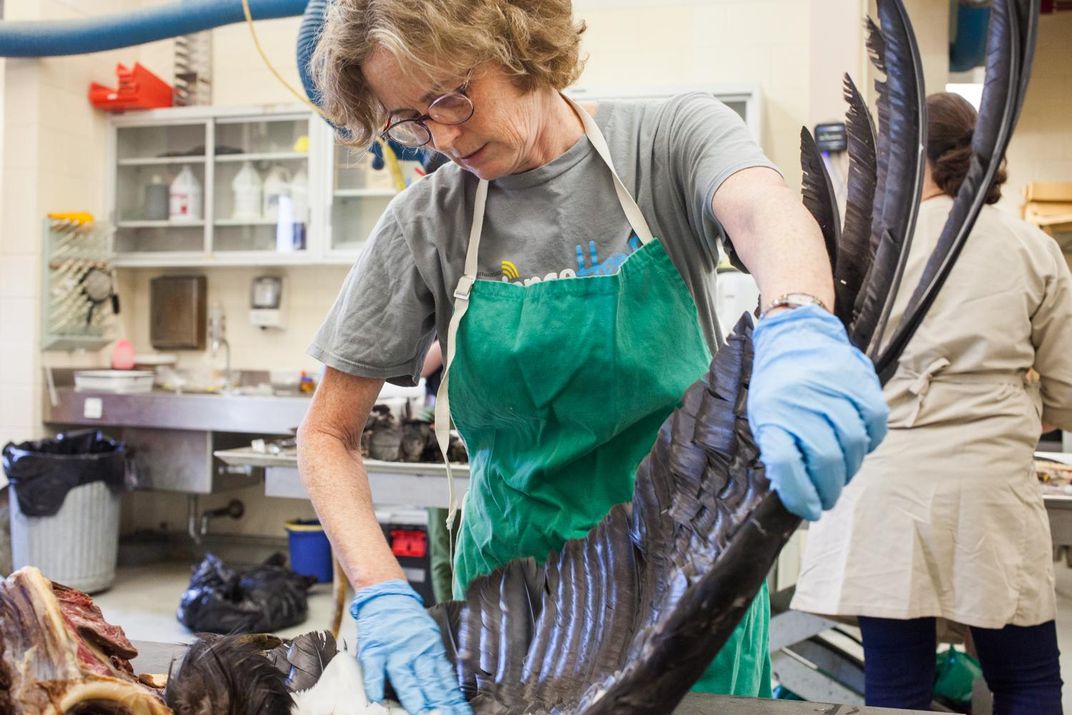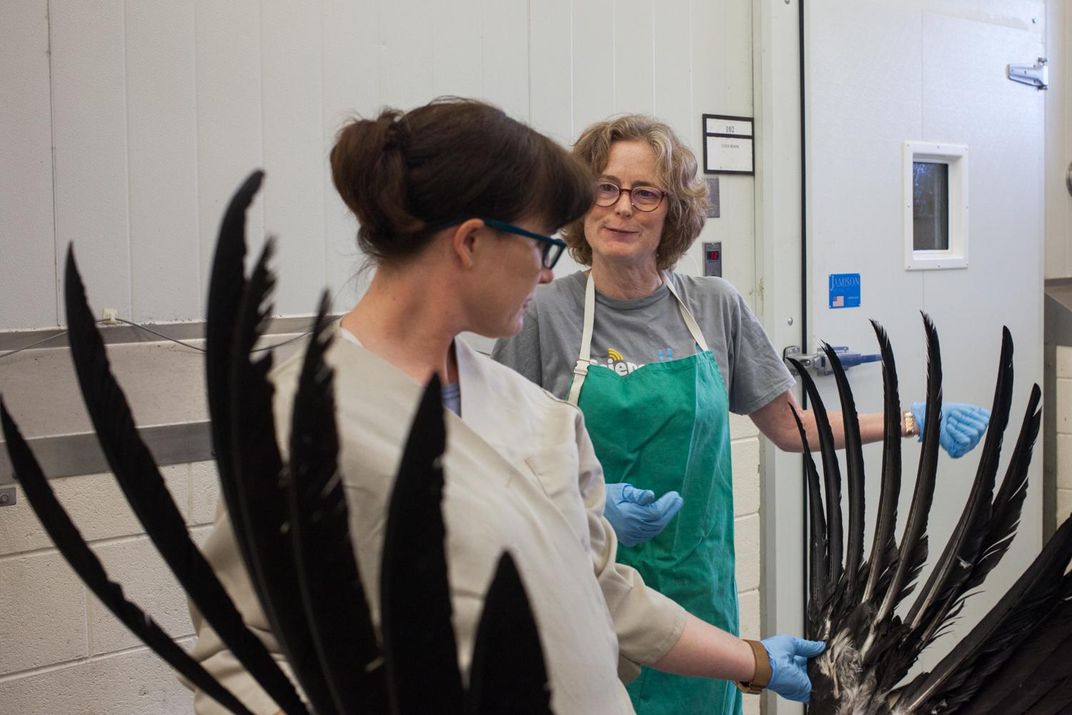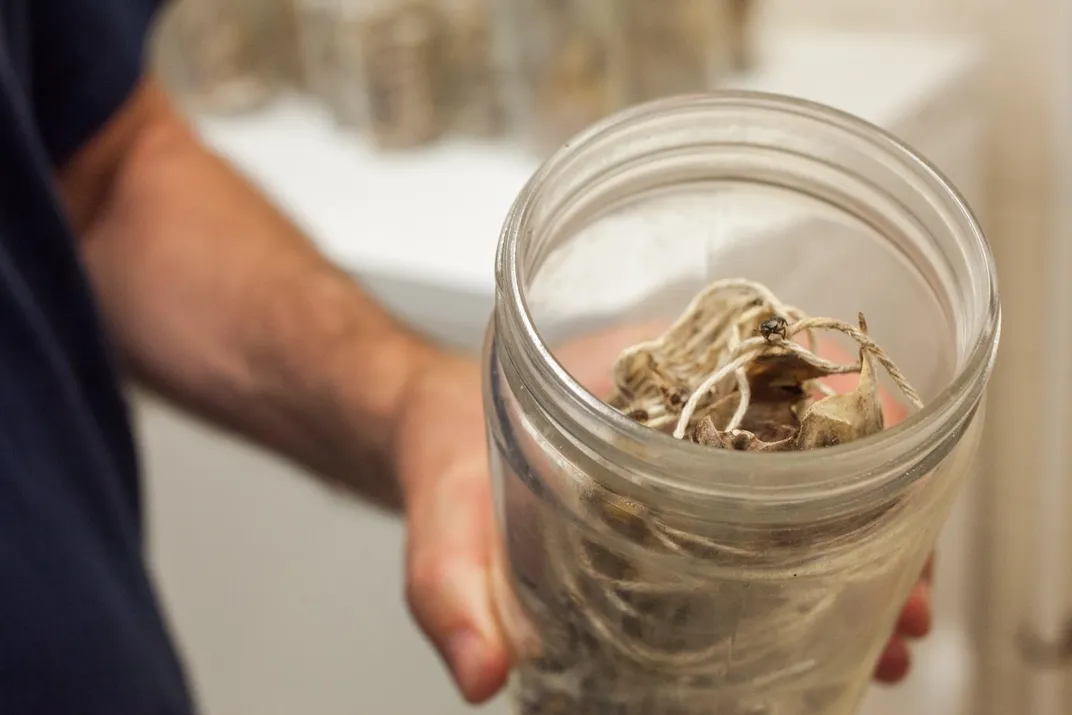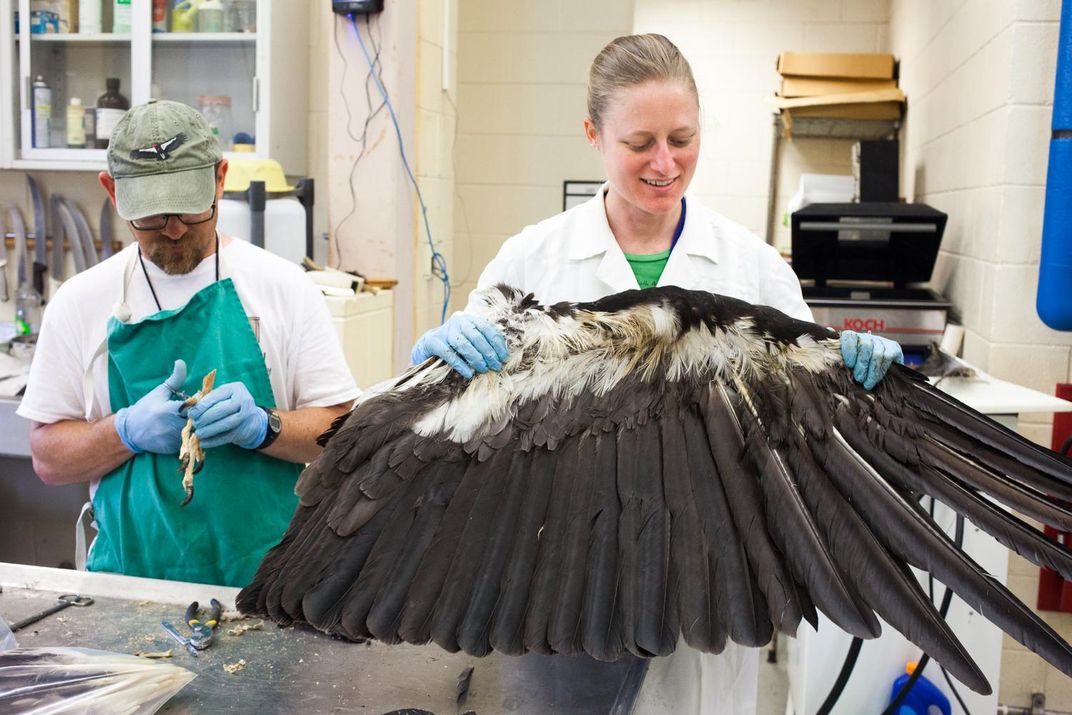Behind the Scenes: Skinning Condors in the Name of Science
One intrepid reporter documents the careful science, artistry and gross factor of a very strange party
The majestically macabre California condor is the largest bird in North America, Mother Nature’s critically endangered cleanup crew, and a miracle conservation success story. After making a comeback with captive breeding, things are looking up for the condor—but not the birds that recently arrived at the Smithsonian Institution’s National Bird Collection laboratories. These condors were dead, and many of them had been for quite awhile.
During the Pleistocene Era, 2 million to 11,000 years ago, robust populations of condors soared high over the continent like grim reapers, scavenging the carcasses of giant prehistoric mammals. But once giant sloths, stag-moose and mastodons became extinct and human developments grew across North America, the California condor population took a nosedive.
By 1982, their numbers had dwindled to just 23 surviving condors. With extinction eminent, the U.S. Fish and Wildlife Service (FWS) launched the California Condor Recovery Program to capture the remaining birds in the wild and restore the population through captive breeding. After just five years, enough birds had hatched in captivity that they could be released to the wild. About 500 descendents of the original 23 condors thrive today, with more than half released and sailing free over the cliffs of California, Utah and Baja California.
Though condors are still critically endangered, the ongoing program continues to both safeguard them from extinction and provide an unparalleled source of ecological insight into these ancient vultures. FWS has tagged and tracked every condor and kept a record of its life milestones. Researchers know exactly where and when each bird hatched, where it nested once released to the wild and when it ultimately dies. Following death, the carcass is collected and stored for future study in a walk-in freezer at the FWS Pacific Southwest headquarters in Sacramento, California.
A few months ago, that freezer filled up.
Even in death endangered species are protected, so FWS needed somewhere to offload their brimming surplus of giant bird carcasses. Luckily, the Smithsonian Institution’s Division of Birds agreed to take them and put them to use for research and museum display. Last week, the freight of dead, frozen condors arrived and set off a flurry of activity as specialists raced to prepare the frozen specimens for the museum’s collection.
“They’re coming to us in various forms of degradation,” says Christopher Milensky, a museum specialist and orchestrator of the condor preparation activities. FWS has been stockpiling the birds for nearly half a century, “so some are sort of fresh, and some are sort of nasty.” Milensky gives this disclaimer as he walks guests through the cavernous Museum Support Center in Suitland, Maryland.
The vast 435,000 square-foot complex serves as a storage facility for the millions of specimens that are not on display in museums. It’s also the laboratories and workspaces for the behind-the-scenes preparation of all the museum’s artifacts. With taxidermied animals from around the planet, jars of preserved specimens suspended in liquid, library books, aircrafts and artwork, the place gives the impression of a giant, immersive diorama put together by a confused curator.
Past the stairs guarded by mountain lions, left at the oryx, and through a hall lined with pygmy whales is the Osteo Prep Lab, the facility where curators have prepared many of the skeletons of mammals, birds, amphibians, and fish on view in the Osteology Hall at the National Museum of Natural History. The lab is also home to one of the most valuable players in a curator’s arsenal: a colony of flesh-eating beetles that hungrily await new specimens to feed upon.
“Most of what we’re doing is turning [the condors] into skeletons,” says Milensky, pulling open the door to the lab to reveal a laundry facility and a bank of shower rooms. “We’re just doing the triage here,” he says. Things tend to get a little messy at the Osteo Prep Lab, hence the showers. “We’ll make them look pretty back at the museum.”
Sprawled across the hallway to Milensky’s right is an enormous, black-feathered carcass. “There’s a condor,” he says. “That’s one I still need to deal with.” The facility is suddenly so full of dead condors they’re literally overflowing into the hallways. As far as problems go, it’s one the Bird Division is celebrating. The Smithsonian hasn’t had a new condor specimen to study or display for nearly a century. Now they’ve got close to 50.
“Here’s the party,” Milensky jokes, entering the big garage-like room where he and his team are working. He notes that the lab can easily be hosed down when they’re done prepping the birds. The room is crowded, buzzing with researchers and specialists, each wearing a pair of gloves and lab coats as they scurry between operating tables and black industrial garbage bags, each of which is stuffed with a condor carcass.
“This is epic,” says Helen James, beaming as she stretches her arms wide to mimic the prodigious 10-foot wingspan of the condors all around her. In her years as curator in charge of the Smithsonian's Division of Birds at the Natural History Museum, she never expected to receive such a windfall of rare specimens in one fell swoop. “It’s a once in a lifetime chance,” she says.
The majority of the museum’s bird specimens are found in the wild, so they can only make educated guesses about their age or provenance. “Most of our other collections are a mystery,” James says, and that makes comparative anatomy and other studies more of a challenge. That’s not the case for these condors. Thanks to the intensive conservation effort and meticulous monitoring by FWS, James says, “we know how old each specimen is—they were all reared in captivity and followed in the wild.”
In addition to the comparative anatomy and ecological data the condors will provide, these vultures have historical importance as well. “It’s a part of American history,” James says. “It has significance in indigenous populations that have overlapped with its range,” kept alive today through cave paintings and stories of ceremonies where condors were used to heal or imbue people with special powers.
With that 10 foot wingspan, it takes five people just to measure one of the specimens they’re prepping. “Just look at this bird!” James exclaims as Milensky helps a colleague pull another condor out of a bag on the floor. “It’s the largest vulture,” James says, a master of flight able to reach heights of 15,000 feet and soar more than 150 miles to find a meal.
Scissors snip and feathers fly as the team descends on the condor, skinning it, then trimming and discarding as much muscle and skin as possible. If the birds aren’t stripped of all the juicy pieces, the carcasses run the risk of rotting. The next stop is the flesh-eating beetles, and Milensky points out that they won’t eat any carcass that’s gone bad—apparently it makes them lose their appetite.
“The bugs take it from flesh to bone,” Milensky says, taking a break from the skinning party to go water the beetles (they like it nice and humid). In the beetle room, he picks up a specimen jar that’s recently been finished, awaiting a rinse and rearticulation. Inside is a ghostly white skeleton of a bird that’s been picked perfectly clean.
Being much too large to fit inside a jar, the condor specimens will be placed in enclosed rooms like meat lockers where the bugs roam free. Milensky pulls over a hose and swings the locker door open to give them a spritz. Inside are buckets and trays filled with the carcasses of everything from mice to giant porpoises and turtles. They’re all crawling with the tiny, black, flesh-eating critters. Each the size of a dime, they happily munch meat away from the bones, and in the process help to craft the perfect museum specimen.
Back in the prep lab, Teresa Feo, a postdoctoral researcher, finishes snipping away the last bits of flesh on a condor before breaking for lunch. “Tasty,” she says, picking some condor gristle off her fingers as she surveys her handiwork.
Feo's research relies on fossilized and real feathers in the museum’s collection to study how the mechanical engineering of flight has evolved over time. She’s confidant the condor samples will be tremendously helpful to her research. “I’ve never used them because that type of material is never available,” she says. These condors offer the opportunity to add to her existing dataset an extreme, large bird end member.
“We’re not just talking sparrows and warblers anymore,” she says. One flight feather from a condor is so big it can weigh as much as 30 hummingbirds. She grabs a ball of string and winds it tightly around her cleaned specimen to help keep it intact as the beetles go to work.
“It’s done. The bugs will like it I think,” says Feo as she proffers her trimmed, trussed and beetle-ready condor carcass to Milensky. “Oh, it’s really smelly,” she adds, holding it a bit further from her nose as Milensky swoops in to grab it, saying, “It’s lovely.”
